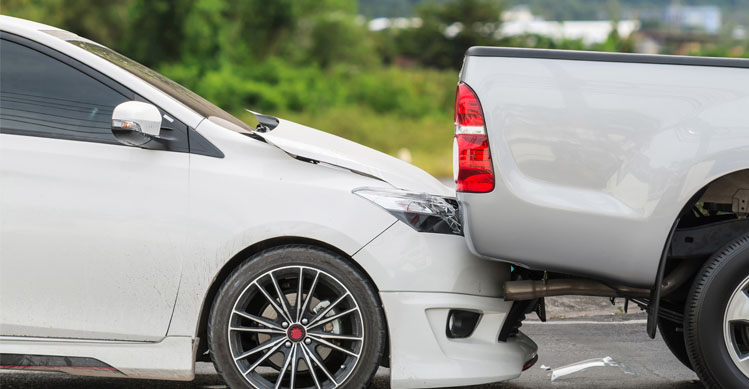So your leave’s approved, the summer bach is booked, your swimming togs still fit and it’s time to hit the road. But hang on! How’s your car’s health?
Too often the trip between home and the beach can end up on the side of the road, waiting for a tow truck miles from anywhere. Add tired and grumpy kids in the mix and it can ruin the start of any holiday!
This scene can be avoided by making sure your car’s in great shape well before you set off for that long-awaited holiday. Most of us aren’t expert motor mechanics, but there are some basic checks even the least practically-minded of us can do to ensure an uninterrupted journey.
Service
It’s a no-brainer to get your vehicle serviced by a reputable mechanic on a regular basis throughout the year. But even though you’ve regularly serviced your vehicle, there are still some simple checks you should make before setting out on a major road trip.
Tyres
With the move from bi-yearly to annual warrant of fitness checks, tyre tread wear can go unnoticed, so it pays to carry out an inspection before a long trip.
While you’re checking tread depths, run your hands around the side of each tyre and feel for any bulges or lacerations. If you notice anything unusual, have a tyre professional check it out.
Tyres can wear unevenly due to tyre pressure, weight balance and road conditions, so it pays to rotate them every 5,000 to 8,000 kilometers. Your local tyre repair shop can usually swap your tyres around while you wait. Some even offer this as a free service if you’re signed on as a regular customer.
Make sure your tyre pressures are correct. Your vehicle’s owner manual will tell you the correct front and rear pressures.
A puncture is bad enough on a road trip, but what’s worse is finding your spare tyre’s flat from the last puncture you had. Check your spare tyre before leaving home and make sure you have tyre replacement tools on board.
Lights
Summer roads are busy, so it’s very important you can be seen in all driving conditions. On the open road, many people choose to drive with their lights on all the time as a safety measure.
Do the walk-round test to make sure all lights are fully operational. If you’re on your own, put a weight on the brake pedal to check the brake lights. Don’t forget to check your reversing lights and high/low beam headlights. This is also a good time to make sure your light lenses are clean and in good condition.
Fluids
These are the lifeblood of your vehicle. They’re largely invisible, so lift the hood and check levels and the condition of all fluids.
Oil: Check the oil is within recommended levels. To do this, park on a level surface and consult your owner’s manual to see if your engine should be warm or cold. If warm is the recommendation, then be careful you don’t burn yourself on a hot engine part. Most oil dipsticks are coloured for easy identification. Remove the dipstick and wipe it clean with a rag and reinsert. Remove it and check that the oil is somewhere between the high and low level marks on the dipstick. Closer to the high level is best, but don’t overfill the oil reservoir. You’re best to add smaller amounts of oil frequently until the level is just below or on the high level.
If your oil is low, black and/or gritty, even though you have had it replaced during regular servicing, then you should have a service technician check your vehicle.
Radiator fluid: Your engine’s working parts create high levels of heat and it’s the radiator fluid that disperses this heat through the radiator. Check that the level in the reservoir is correct. If it requires a top up, refer to your manual to see if a particular brand is recommended.
Brake fluid: Your brakes rely on brake fluid to compress the brake pads onto the brake rotor (that shiny disc you can see behind the wheel). If there’s a leak and your brake fluid is low, you could lose braking ability. Brake fluid starts to go bad as soon as you open a container, so if you need a top up make sure you use a new sealed bottle of brake fluid.
Windshield fluid: Summer is bug time, so make sure your reservoir is full and includes a squirt of windscreen additive. Take extra additive with you. Give them a quick wipe with a rag to clean off anything that might be stuck to the blades to save smudges.
Belts and Hoses
While you’ve got your head under the hood, do a visual inspection to spot any loose or worn belts. Keep an eye out for signs of hoses leaking and have them repaired where necessary.
Air Conditioning
On a long trip your car shouldn’t overheat; likewise for you or your passengers. Test out your air conditioner before you leave. If it’s not offering you crisp cold air, then it could be time to have the unit re-gassed.
Fresh air on your face from an open window may feel nice, but you don’t want a car full of fumes, pollen and insects. In traffic jams, keep your A/C on recycle and the windows closed. Have your air filter checked as well, so you know fumes and dust are being filtered out and not recirculated.
Towing
Caravans, boats and trailers often get their first outing when summer arrives. Check to see that their lights are operational. In particular, check wheel bearings to make sure they’re not loose or noisy.
Car care and maintenance might seem like a pain, but it’s mild compared to the frustration of a road trip that goes nowhere. Your car works hard on a long summer road trip, so give it what it needs to keep running smoothly.
Car Insurance
Before setting off make sure your car is covered with the right level of protection. State offers three levels of cover to choose from.
- Comprehensive - Comprehensive car insurance with all the bells and whistles. Whether it’s someone else’s fault or you accidentally prang your car, we’ve got your back.
- Car Third Party Fire and Theft - Cover with some protection including theft and fire, damage to someone else’s vehicle or property, damage to your car by an uninsured driver or injuring someone in an accident you’ve caused.
- Third Party Only - No-frills car insurance that covers damage to someone else’s vehicle or property, your liability if you accidentally injure someone, or for damage to your car caused by an uninsured driver.
You might also like...
-
 February 2022Driving Blog | State Insurance
February 2022Driving Blog | State InsuranceTop 10 Suburbs for Collisions
-
 August 2020Driving Blog | State Insurance
August 2020Driving Blog | State InsuranceProtecting Your Ride
-
 August 2020Driving Blog | State Insurance
August 2020Driving Blog | State InsuranceHow to Stop Someone from Stealing Your Car
